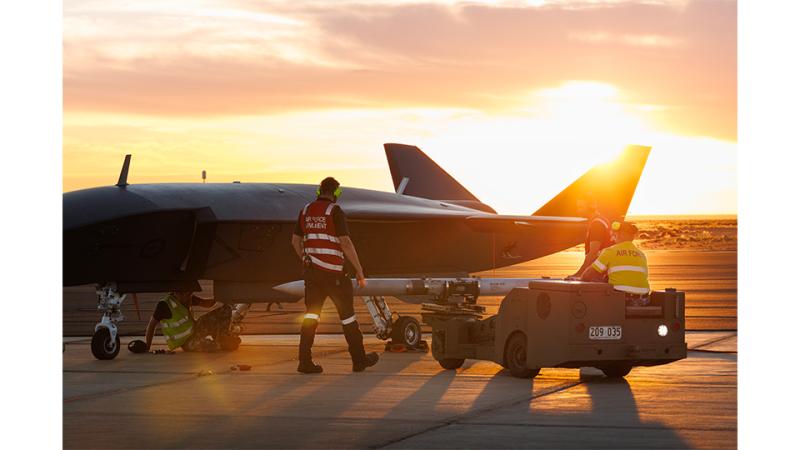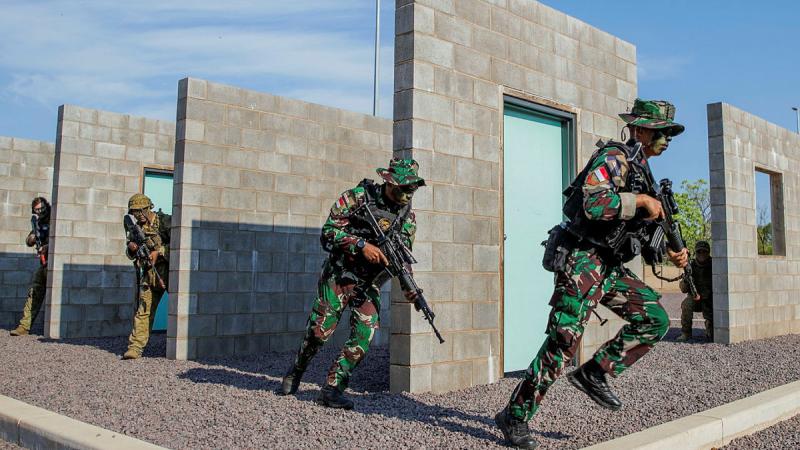8 August 2025
In a shipping container near Gladstone, Navy’s newest engineering asset hummed to life during Exercise Talisman Sabre 2025.
The Deployable Additive Manufacturing and Repair Capability (DAMR) is the Navy’s first demonstration of a deployable 3D printing capability.
This is the first prototype within the Fleet Additive Manufacturing and Repair Capability Project, sponsored by the Navy Logistics and Infrastructure Branch (NLIB) under expeditionary logistics, and managed under the Navy Minor Capital Program.
The capability is designed to provide next-generation fabrication to facilitate logistics support, defect and underway repair to deployed maritime units.
During Talisman Sabre, the DAMR housed three 3D printers and a suite of design tools to turn digital designs into practical solutions, layer-by-layer.
The 3D printers were chosen for their different strengths: the Prusa Core One for fast, single-polymer prototyping; the Ultimaker Factor 4 for precise final products using dual filaments; and the Markforged X7, which prints with a proprietary carbon-reinforced polymer nearly as strong as metal.
Later in the year, the Fusion F3 will be installed into the DAMR, bringing the total printing capability to four printers.
'It provides a chance to show multinational interoperability, that they can rely on us to provide them with last-second engineering controls.'
The DAMR can also create 3D digital models of objects with a scanner that can be used accurately to measure dimensions for projects in computer-aided drawing and modelling software.
Marine technician Able Seaman Lachlan Hannan was one of the operators deployed with DAMR to lend an engineering mindset to the additive manufacturing.
“I already have the background knowledge on how things work, how they are supposed to be made and what things should be considered when designing,” Able Seaman Hannan said.
One project he worked on was a communications box ‘exoskeleton’ to protect cables from damage for United States forces operating in the area.
“It provides a chance to show multinational interoperability, that they can rely on us to provide them with last-second engineering controls,” Able Seaman Hannan said.
“There’s a lot of small fixes that we can assist with in an operational environment; there’s plenty of things that break, and people just work around, but we can provide assistance to fix those issues that eases the stress of people on the deployments.”
The container was delivered directly to the area of operations from the manufacturer, Global Defence Solutions in Nowra, meaning its first full operation was in the field.
The DAMR operators consisted of four Fleet Support Unit sailors with backgrounds in a variety of trades, each bringing different expertise to help with the design and manufacture of innovative solutions.
They designed and printed several projects during the exercise, including communication switches, a drone controller and fan bracket, and ground pegs for tents.
'The end goal is that the capability supports the integrated force, and if people on a ship have a problem, they can just go below and print something.'
Current printing is limited to polymers, but Navy has its eye on future enhancements, including the possibility of metal additive manufacturing like that used by the United States Navy.
Deputy Director of Innovation and Continuous Improvement at the Navy Centre for Innovation, Brendan Funnell, who has been a key contributor to the project and deployed on Talisman Sabre, said the container trial was a critical learning opportunity.
“The container is helping us learn how reliable the printers are and identify any faults the glossy datasheet doesn’t tell you,” Mr Funnell said.
“None of these printers are designed to work at sea, but some of them handle it well.”
During the exercise, the team was even able to manufacture a part requested by HMAS Choules and fly it to the ship via the Maritime Support Drone – Air (another Navy Minor Project sponsored by NLIB) in an automated mode with remote pilot monitoring, proving the concept for rapid, on-demand repairs to support Australia's maritime platforms at sea.
“The end goal is that the capability supports the integrated force, and if people on a ship have a problem, they can just go below and print something, or reach back to a deployable capability to print and then forward to the ship,” Mr Funnell said.


